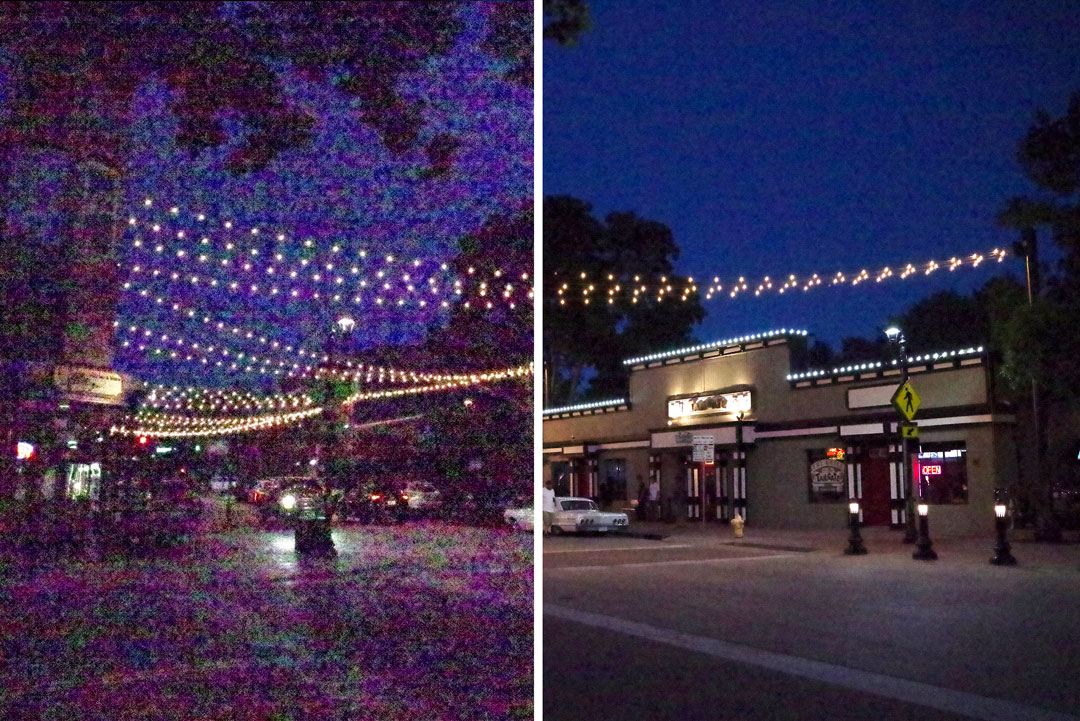Today’s Post by Joe Farace
“Light thinks it travels faster than anything but it is wrong. No matter how fast light travels, it finds the darkness has always got there first, and is waiting for it.”― Reaper Man
Lets talk ISO
ISO (International Organization for Standardization) ratings are a standard method for quantifying a film emulsion’s—please hold on, digital’s coming—sensitivity to light. Lower numbers, such as ISO 50 or 100, represent less sensitivity; while higher numbers, such as 400 or 800, show that a film is more sensitive to light.
Much like f/stops and shutter speeds, ISO numbers are also proportional in their sensitivity to light. As you double or halve an ISO number, you double or halve a film’s sensitivity to light. Film with an 800 ISO is twice as sensitive to light as 400, and 800 film is half as sensitive to light as 1600.
What About Digital?
Factoid: Digital cameras do not have a true ISO speed, which is why you’ll often see the term “ISO Equivalent” tossed around in some DSLR or mirrorless camera’s specifications. Over the years camera manufacturers have developed technologies that make their camera’s imaging sensors respond to light in a manner that’s similar to how film responds to that same amount of light. Digital cameras typically offer a range of ISO speeds that vary based on a specific camera’s design but most importantly when you set a DSLR or mirrorless camera to ISO 400, you can expect a similar response to light that ISO 400 film would produce under the same lighting conditions.

The Pentax K-1 Mark II, for example, has a Ricoh-developed Accelerator Unit that boosts the camera’s sensitivity up to ISO 819,200 for shooting in extreme low light. Think black cat in a coalmine.
How I Made this shot: Here’s a high ISO look at Mainstreet Parker, Colorado at night. At left is the view at ISO 819,200; while at right it is set at ISO 51,200. While somewhat noisy at 51,200 the image quality is , for the most part, acceptable considering the ISO speed and lighting conditions. I tried applying noise reduction software (Imagenomic’s Noiseware and DFine) to the original files but neither was really effective in controlling the noise from either of these two image files. What you see above are JPEG files straight out of the camera (SOOC.) The Program mode exposure of the left half image was 1/2000 sec at f/10 and ISO 819,200; the right half exposure was 1/1000 sec at f/3.5 and ISO 51,200.
For more on noise, you might want to read my post Tips for Dealing with Digital Noise in Your Photographs, when you have time.
 If you enjoyed today’s blog post and would like to treat Joe to a cup of Earl Grey tea ($2.50), click here. And if you do, many thanks.
If you enjoyed today’s blog post and would like to treat Joe to a cup of Earl Grey tea ($2.50), click here. And if you do, many thanks.
Along with photographer Barry Staver, Joe is co-author of Better Available Light Digital Photography that’d available for $21.50 or used copies starting around five bucks—from Amazon, as I write this.